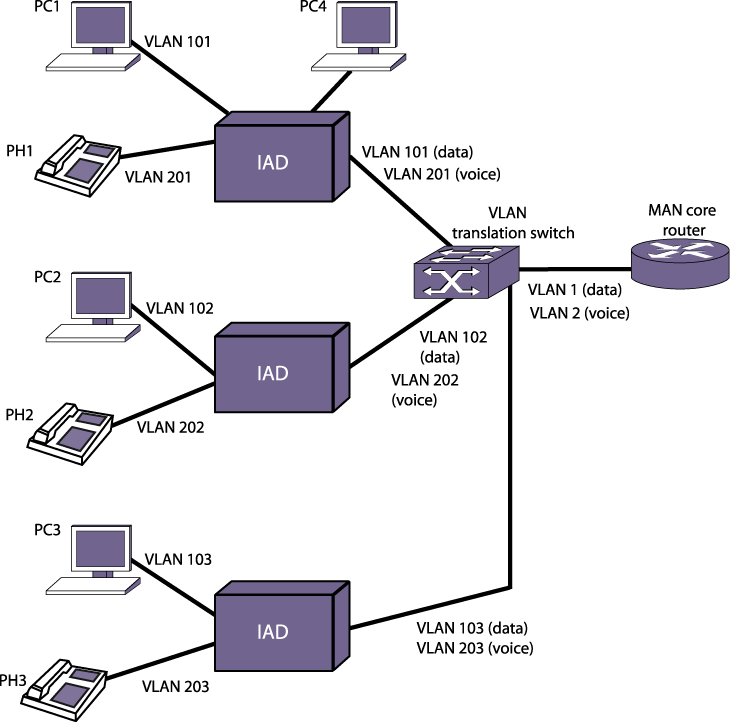VLAN (Virtual LAN) translation provides the ability to translate the 802.1Q tags for several VLANs into a single VLAN tag. VLAN translation is an optional component in a PVLAN.
VLAN translation allows you to aggregate Layer 2 VLAN traffic from multiple clients into a single uplink VLAN, improving VLAN scaling. VLAN Translation Application shows an application of VLAN translation.

In the figure, VLANs 101, 102, and 103 are subscriber VLANS that carry data traffic while VLANs 201, 202, and 203 are subscriber VLANs that carry voice traffic. The voice and data traffic are combined on integrated access devices (IADs) that connect to the VLAN translation switch. Each of the three clusters of phones and PCs uses two VLANs to separate the voice and data traffic. As the traffic is combined, the six VLANs are translated into two network VLANs, VLAN1 and VLAN2. This simplifies administration, and scales much better for large installations.
Conceptually, this is very similar to Layer 3 VLAN aggregation (superVLANS and subVLANs).

 Print
this page
Print
this page Email this topic
Email this topic Feedback
Feedback